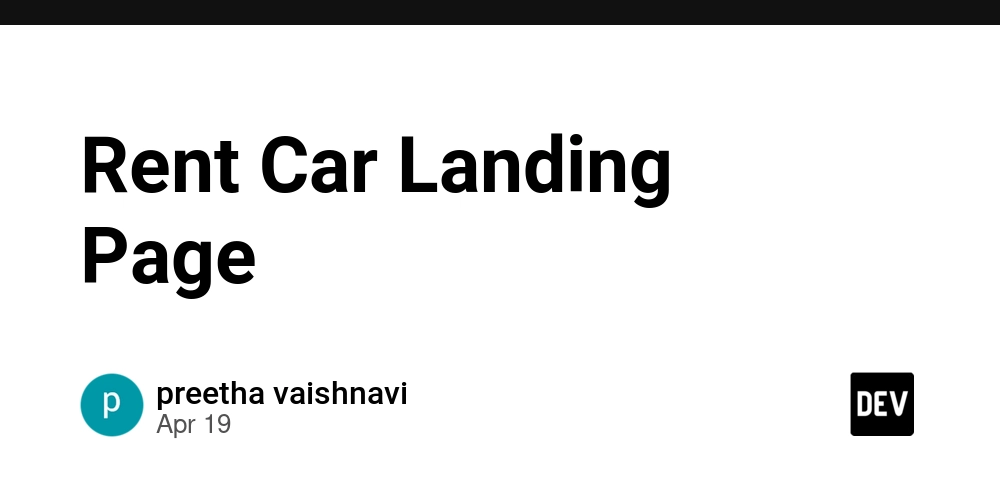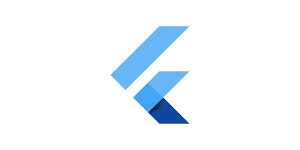The LinkedIn Scraping Tools You Need to Know in 2025
LinkedIn holds a treasure trove of professional data—but trying to manually pull insights from it? That’s a major headache. That’s why LinkedIn scraping tools are game-changers. They automate the data extraction process, cutting down tasks that would take hours into just minutes. Whether you're looking to scout talent or keep tabs on industry trends, the right tool can completely streamline your workflow. So how do you know which tools are worth your time?** Let’s break down the top 10 LinkedIn scraping tools of 2025—the ones that truly get the job done. 1. Swiftproxy: The Gold Standard in LinkedIn Scraping Swiftproxy is the leader in web scraping, offering a LinkedIn scraper that stands head and shoulders above the competition. Why? Because it's backed by a massive, ultra-reliable proxy network—meaning it can pull LinkedIn data without ever tripping anti-scraping measures. What’s Special: LinkedIn Scraper API: Effortlessly collect structured LinkedIn data. Profile Scraper: Retrieve detailed info from individual profiles, including job titles, education, experience, and more. Key Features: Advanced IP and user-agent rotation. Automatic CAPTCHA bypass. Scalable with full control over the data you pull. Why It’s a Winner: Trusted by over 20,000 companies. Scalability and flexibility that businesses love. Export data to CSV, JSON, or NDJSON for easy analysis. Drawbacks: Requires some technical know-how. 2. Apify: Build Your Custom Scrapers Apify is for the developers who want full control. This platform allows you to build custom scraping agents (called "actors") for LinkedIn. Whether you need to track job postings, pull detailed profiles, or scrape company pages, Apify has the flexibility you need. What’s Special: Custom “actors” let you tailor scraping tasks to your needs. Supports both JavaScript and Python for deep integration. Key Features: 1,500+ pre-built agents. Simple click-and-go scraping for profiles and companies. Free trial with no credit card required. Why It’s a Winner: Complete customization for complex scraping tasks. Integrates seamlessly with any programming language. Drawbacks: Response times can be slow for support. 3. LinkedIn Scraper (GitHub): The Developer’s Dream If you're a Python aficionado, this open-source LinkedIn scraper is a dream come true. It’s simple, customizable, and—best of all—free. You’ll need to roll up your sleeves and dive into the code, but if you’re up for it, the rewards are plenty. What’s Special: Python library for custom scraping, based on Selenium. Open-source, meaning you can tweak it however you like. Key Features: Collect over 20 fields of data. Highly customizable and regularly updated. Why It’s a Winner: Free to use—zero cost. Fully open-source, so you have complete control. Drawbacks: Technical setup required. Only works with Python. 4. PhantomBuster: Automate and Enrich Your Data PhantomBuster is a no-code tool that simplifies LinkedIn scraping and automation. From pulling data to enriching your CRM, it integrates seamlessly with Google Sheets or Excel, making it a solid option for marketers. What’s Special: Link PhantomBuster with Google Sheets and automate your LinkedIn scraping. Pull data from profiles and company pages and send it straight to your CRM. Key Features: Chrome/Firefox extensions for easy scraping. Automatic data updates with every run. 50+ automation tasks beyond scraping. Why It’s a Winner: Perfect for automating LinkedIn outreach and lead generation. No technical skills required. Drawbacks: Not focused purely on scraping—more of a broad automation tool. Requires a list of LinkedIn URLs to start. 5. Dripify: The All-in-One LinkedIn Solution Dripify is more than just a scraper. It’s an automation tool designed for sales teams to automate prospecting and follow-ups, with data extraction as part of the package. If you're focusing on lead generation, this tool handles both scraping and outreach. What’s Special: Scrape email addresses, phone numbers, and profile data. CRM integrations with Google Sheets, HubSpot, and Zoho. Key Features: Export to CSV or integrate with your CRM. Automate your entire LinkedIn lead generation workflow. Why It’s a Winner: No-code platform—easy to set up and use. Works well for sales teams looking to streamline LinkedIn tasks. Drawbacks: Focuses mainly on profiles, not company pages. Limited features on the basic plan. 6. Oxylabs: Proxy Power for LinkedIn Scraping Oxylabs is known for its robust proxy solutions, and it also offers scraping capabilities. While it doesn’t offer a LinkedIn-specific endpoint, it’s a powerful option if you need to scrape LinkedIn while bypassing anti-scraping measures like rate limits. What’s Special: Powerful proxy management to handle LinkedIn’s anti-scraping tech. CAPTCHA bypass and JavaScript rendering. Key Features: Can in

LinkedIn holds a treasure trove of professional data—but trying to manually pull insights from it? That’s a major headache. That’s why LinkedIn scraping tools are game-changers. They automate the data extraction process, cutting down tasks that would take hours into just minutes. Whether you're looking to scout talent or keep tabs on industry trends, the right tool can completely streamline your workflow.
So how do you know which tools are worth your time?** Let’s break down the top 10 LinkedIn scraping tools of 2025—the ones that truly get the job done.
1. Swiftproxy: The Gold Standard in LinkedIn Scraping
Swiftproxy is the leader in web scraping, offering a LinkedIn scraper that stands head and shoulders above the competition. Why? Because it's backed by a massive, ultra-reliable proxy network—meaning it can pull LinkedIn data without ever tripping anti-scraping measures.
What’s Special:
- LinkedIn Scraper API: Effortlessly collect structured LinkedIn data.
- Profile Scraper: Retrieve detailed info from individual profiles, including job titles, education, experience, and more.
Key Features:
- Advanced IP and user-agent rotation.
- Automatic CAPTCHA bypass.
- Scalable with full control over the data you pull.
Why It’s a Winner:
- Trusted by over 20,000 companies.
- Scalability and flexibility that businesses love.
- Export data to CSV, JSON, or NDJSON for easy analysis.
Drawbacks:
- Requires some technical know-how.
2. Apify: Build Your Custom Scrapers
Apify is for the developers who want full control. This platform allows you to build custom scraping agents (called "actors") for LinkedIn. Whether you need to track job postings, pull detailed profiles, or scrape company pages, Apify has the flexibility you need.
What’s Special:
- Custom “actors” let you tailor scraping tasks to your needs.
- Supports both JavaScript and Python for deep integration.
Key Features:
- 1,500+ pre-built agents.
- Simple click-and-go scraping for profiles and companies.
- Free trial with no credit card required.
Why It’s a Winner:
- Complete customization for complex scraping tasks.
- Integrates seamlessly with any programming language.
Drawbacks:
- Response times can be slow for support.
3. LinkedIn Scraper (GitHub): The Developer’s Dream
If you're a Python aficionado, this open-source LinkedIn scraper is a dream come true. It’s simple, customizable, and—best of all—free. You’ll need to roll up your sleeves and dive into the code, but if you’re up for it, the rewards are plenty.
What’s Special:
- Python library for custom scraping, based on Selenium.
- Open-source, meaning you can tweak it however you like.
Key Features:
- Collect over 20 fields of data.
- Highly customizable and regularly updated.
Why It’s a Winner:
- Free to use—zero cost.
- Fully open-source, so you have complete control.
Drawbacks:
- Technical setup required.
- Only works with Python.
4. PhantomBuster: Automate and Enrich Your Data
PhantomBuster is a no-code tool that simplifies LinkedIn scraping and automation. From pulling data to enriching your CRM, it integrates seamlessly with Google Sheets or Excel, making it a solid option for marketers.
What’s Special:
- Link PhantomBuster with Google Sheets and automate your LinkedIn scraping.
- Pull data from profiles and company pages and send it straight to your CRM.
Key Features:
- Chrome/Firefox extensions for easy scraping.
- Automatic data updates with every run.
- 50+ automation tasks beyond scraping.
Why It’s a Winner:
- Perfect for automating LinkedIn outreach and lead generation.
- No technical skills required.
Drawbacks:
- Not focused purely on scraping—more of a broad automation tool.
- Requires a list of LinkedIn URLs to start.
5. Dripify: The All-in-One LinkedIn Solution
Dripify is more than just a scraper. It’s an automation tool designed for sales teams to automate prospecting and follow-ups, with data extraction as part of the package. If you're focusing on lead generation, this tool handles both scraping and outreach.
What’s Special:
- Scrape email addresses, phone numbers, and profile data.
- CRM integrations with Google Sheets, HubSpot, and Zoho.
Key Features:
- Export to CSV or integrate with your CRM.
- Automate your entire LinkedIn lead generation workflow.
Why It’s a Winner:
- No-code platform—easy to set up and use.
- Works well for sales teams looking to streamline LinkedIn tasks.
Drawbacks:
- Focuses mainly on profiles, not company pages.
- Limited features on the basic plan.
6. Oxylabs: Proxy Power for LinkedIn Scraping
Oxylabs is known for its robust proxy solutions, and it also offers scraping capabilities. While it doesn’t offer a LinkedIn-specific endpoint, it’s a powerful option if you need to scrape LinkedIn while bypassing anti-scraping measures like rate limits.
What’s Special:
- Powerful proxy management to handle LinkedIn’s anti-scraping tech.
- CAPTCHA bypass and JavaScript rendering.
Key Features:
- Can integrate with multiple programming languages.
- Provides real-world browser fingerprints to avoid detection.
Why It’s a Winner:
- Perfect for developers who need to scrape without getting blocked.
- High-quality proxy network ensures smooth scraping.
Drawbacks:
- Doesn’t have LinkedIn-specific scraping endpoints.
- Requires technical expertise.
7. Linked Helper: Affordable, Effective Automation
Linked Helper is a desktop-based application that combines LinkedIn automation and scraping. It’s a solid choice if you want to extract profile data and automate your LinkedIn messaging and connection requests.
What’s Special:
- Scrapes profile data and company details.
- Message history downloader to track interactions.
Key Features:
- Integration with 3rd-party services.
- Cross-platform (Windows, macOS, Linux) support.
Why It’s a Winner:
- Affordable pricing for individuals or small businesses.
- Comprehensive tool for LinkedIn automation.
Drawbacks:
- Requires installation on your device.
- Not specialized in scraping.
8. Meet Alfred: Simple Yet Powerful
Meet Alfred is another LinkedIn automation tool with scraping functionality. Its ease of use and intuitive UI make it an attractive option for those who want an all-in-one solution for LinkedIn outreach and data collection.
What’s Special:
- Automates connection requests and messages.
- Scrape profile and company data.
Key Features:
- CRM integration.
- Profile tagging for better data management.
Why It’s a Winner:
- All-in-one LinkedIn tool that’s easy to set up.
- Ideal for marketers looking for a simple solution.
Drawbacks:
- Not focused on scraping—more for automation.
Conclusion
If you're serious about scraping LinkedIn data at scale, Swiftproxy is your go-to tool. It's reliable, flexible, and backed by one of the largest proxy networks in the world. However, if you’re a developer, LinkedIn Scraper (GitHub) offers a free, open-source solution that gives you full control.
Choose your tool wisely—whether it's scraping for recruitment, sales, or research, the right tool will save you time and give you the insights you need to succeed.



































































![Apple Watch Series 10 Back On Sale for $299! [Lowest Price Ever]](https://www.iclarified.com/images/news/96657/96657/96657-640.jpg)
![Apple Slips to Fifth in China's Smartphone Market with 9% Decline [Report]](https://www.iclarified.com/images/news/97065/97065/97065-640.jpg)
![EU Postpones Apple App Store Fines Amid Tariff Negotiations [Report]](https://www.iclarified.com/images/news/97068/97068/97068-640.jpg)















![What’s new in Android’s April 2025 Google System Updates [U: 4/18]](https://i0.wp.com/9to5google.com/wp-content/uploads/sites/4/2025/01/google-play-services-3.jpg?resize=1200%2C628&quality=82&strip=all&ssl=1)






























































































_Andreas_Prott_Alamy.jpg?width=1280&auto=webp&quality=80&disable=upscale#)





















































































![[The AI Show Episode 144]: ChatGPT’s New Memory, Shopify CEO’s Leaked “AI First” Memo, Google Cloud Next Releases, o3 and o4-mini Coming Soon & Llama 4’s Rocky Launch](https://www.marketingaiinstitute.com/hubfs/ep%20144%20cover.png)












































































































































![[FREE EBOOKS] Machine Learning Hero, AI-Assisted Programming for Web and Machine Learning & Four More Best Selling Titles](https://www.javacodegeeks.com/wp-content/uploads/2012/12/jcg-logo.jpg)






























































































